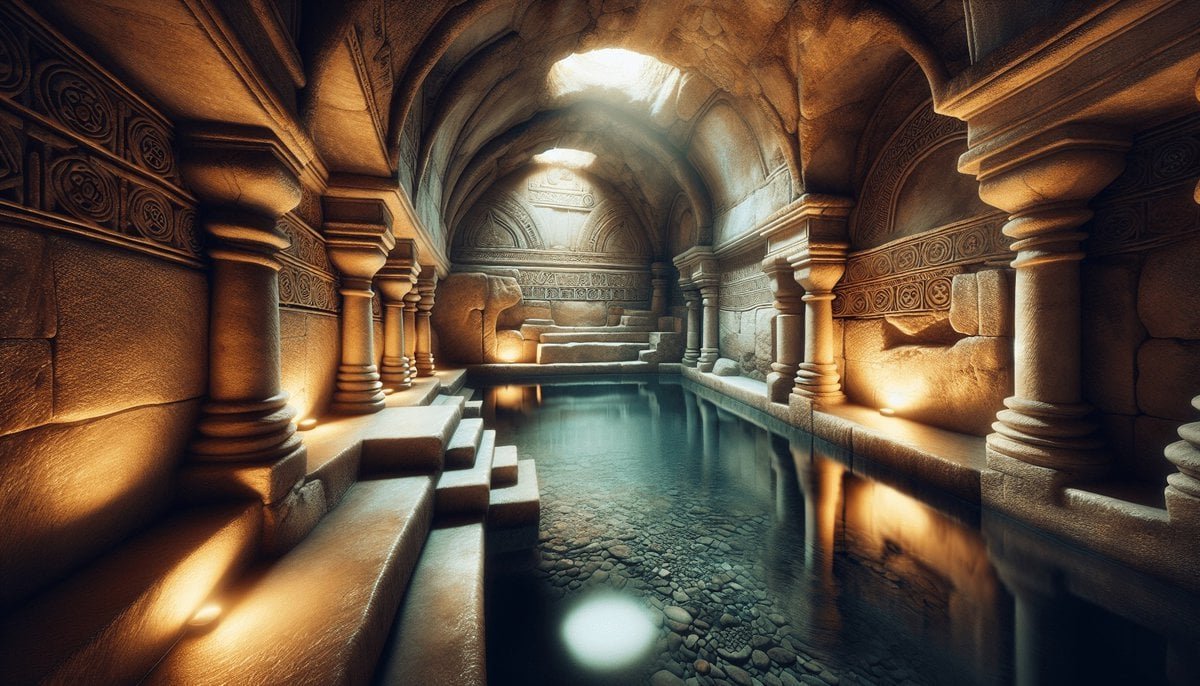Have you ever wondered about the ancient practices that shaped religious and cultural rituals through history? One such practice—the use of mikveh, or the ancient Jewish bath house—offers a fascinating glimpse into a history rich with tradition and spiritual significance. These ancient structures not only provide insight into the daily lives of Jewish communities of the past but also serve as a testament to religious observances that have permeated through centuries.
Discovering the Ancient Jewish Bath House
The rediscovery of these ancient bath houses has brought to light intriguing archaeological findings that captivate historians, archaeologists, and religious scholars alike. Situated primarily in the lands of antiquity such as Israel and its surrounding areas, these structures hold a wealth of information on Jewish religious practices as mentioned in biblical texts. This article aims to unravel the historical contexts and archaeological evidence surrounding the ancient Jewish bath house, exploring its profound significance, both historically and biblically.
The Discovery Context
Biblical References Across Time
The concept of ritual purification through water is deeply embedded in Jewish tradition and is extensively referenced in biblical texts. The mikveh, a ritual bath used for purification purposes, is highlighted within the Torah as a fundamental aspect of Jewish law and personal piety. These ritual baths are referred to as places where individuals would immerse themselves to achieve a state of spiritual cleanliness. Understanding the biblical basis for these practices is crucial in appreciating their impact on religious life.
Historical Background
Tracing back to the Second Temple period, these bath houses date from the 1st century BCE to the early centuries of the Common Era. During this time, rigorous purity laws required the faithful to regularly engage with these sacred spaces, thus embedding them into the fabric of everyday life. The societal reliance on mikveh waters underscores their pivotal role within Jewish communities. This period witnessed an increase in the construction of mikveh facilities due to the establishment of the Temple in Jerusalem, reinforcing the importance of religious purity.
Geographic Location
Located primarily throughout Israel and surrounding regions, ancient mikvehs have been discovered in urban centers such as Jerusalem, Qumran, and Galilee. The concentration of these structures near synagogues and ancient cities suggests their accessibility and importance for the community. Geographical studies of these locations afford scholars the opportunity to understand the socio-cultural settings in which these baths existed. Each discovery site potentially alters the perception of Jewish social life within different periods and circumstances.
Recent Findings: A Glimpse Into the Past
In recent years, excavations in the areas of archaeological interest have successfully unearthed numerous mikvehs. For instance, important discoveries at the City of David and the Judean Desert provide physical corroboration to historical accounts. These finds include beautifully constructed pools with sophisticated water collection systems, showcasing the architectural foresight and religious dedication of those who built them. Recent findings have invigorated scholarly debate on the role of mikveh in the daily lives of ancient Jewish communities and their broader cultural implications.
Archaeological Evidence
Specific Artifacts: The Glimpses of History
The archaeological artifacts discovered at mikveh sites have proven invaluable in understanding their construction and use. Common artifacts include stone vessels, indicative of the purity laws prohibiting metal utensils, which could become impure. Additionally, pottery shards and remnants of water channels reveal the methods ancient builders employed to ensure continuous water supply to the baths. These materials not only reveal the ingenuity of ancient construction but also highlight the degree of adherence to religious regulations.
Dating Methods: Unlocking the Timeline
Determining the age of these mikveh sites is accomplished through several methods, including stratigraphy and radiocarbon dating. Stratigraphy involves analyzing the layers of earth and sediments accumulated over time, providing a relative chronology for the artifacts found. Radiocarbon dating further refines this timeline by offering absolute dating for organic remains, such as wood, found within the constructions. These dating methods enable researchers to piece together the historical timeline of mikveh use, opening up new discussions about their evolution across different periods.
Physical Descriptions: The Structure and Form
The physical structure of ancient mikvehs varies widely, both in terms of construction material and design. Typically, they include a stepped basin filled by rainwater or a natural spring, emphasizing the significance of naturally sourced, living water. These basins are often hewn directly into bedrock or constructed from stones with specific adherence to Jewish law, whereby the water must come directly from a natural source without intervention. The discovery of multiple chamber mikvehs introduces questions about the social and communal aspects of these ancient rituals.
Expert Interpretations: Deciphering the Findings
Renowned archaeologists and biblical scholars provide interpretations that place these findings within broader historical and religious contexts. Experts argue that the mikveh serves as an intersection between daily life and spiritual readiness, illustrating the cultural importance attributed to ritual purity. Furthermore, their presence in domestic settings adds layers to our understanding of ancient Jewish domestic life, pointing to the mikveh’s role in family and community bonding. Such interpretations facilitate a deeper understanding of how religious practices influenced societal norms and personal beliefs.
Significance
Biblical Implications: More Than Just a Bath
The ritual use of water for purification is intricately tied to Jewish identity, underscoring the biblical mandates that continue to shape contemporary religious life. It becomes evident that these ancient bath houses were more than physical structures; they were spaces of spiritual significance where one performed acts sanctified by religious doctrine. The biblical implications of the mikveh and its use allow us to glimpse into the exigencies of religious life in the past and appreciate its continued importance in Jewish communities around the world.
Historical Impact: A Testament to Faith
The discovery of ancient mikvehs speaks volumes about the persisting adherence to religious practices over millennia. Their existence highlights the communal importance placed on maintaining religious observance, even during challenging times such as the Roman occupation and the subsequent Jewish diaspora. These structures serve as historical testimonies to the resilience and steadfastness of Jewish communities in preserving their religious identity across turbulent periods.
Modern Understanding: Bridging Past and Present
In contemporary times, mikveh provides a fascinating link between ancient traditions and present-day religious practices. By understanding these ancient structures, we gain a clearer perspective on the continuity of cultural and spiritual traditions. A renewed interest in these historical bath houses has catalyzed a broader discussion on how religious observances have evolved while retaining their core significance, further nurturing the appreciation for a profound cultural heritage.
Research Status: The Continuous Quest
The academic journey to uncover, analyze, and interpret these archaeological sites is ongoing. Continued excavations and advancements in archaeological technologies promise to deepen our knowledge of ancient Jewish practices further. As researchers delve into different sites and unearth various artifacts, we come closer to painting a comprehensive picture of how mikveh use shaped Jewish community life over centuries. The field remains ripe for exploration, offering exciting possibilities for understanding our shared human history.
Conclusion
In summary, the discovery and study of ancient Jewish bath houses provide profound insights into biblical and historical contexts that have influenced generations. These structures epitomize the intersection of faith, daily life, and cultural identity, offering invaluable clues about the religious practices of ancient Jewish communities. As both a spiritual sanctum and a communal necessity, the mikveh continues to play a significant role in religious observance today. The exploration of these sites not only enriches our understanding of the past but also calls upon you to appreciate the richness and continuity of cultural traditions. Scholars will undoubtedly continue to probe these questions, driving forward our understanding of history’s impact on the present. As new findings emerge, they urge you to consider your own connections to historical traditions deeply embedded in the fabric of human civilization.






